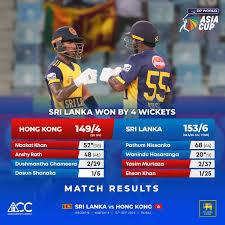Hong Kong vs Sri Lanka: A Comprehensive Overview

Introduction
The geopolitical landscape of Asia is shaped by various nations, with Hong Kong and Sri Lanka being two significant players. Hong Kong, a former British colony, is now a Special Administrative Region of China with a vibrant economy and unique cultural identity. Conversely, Sri Lanka is an island nation in South Asia known for its rich history and diverse culture. Understanding the differences and similarities between these two regions is crucial for investors, tourists, and academics alike.
Economic Factors
Hong Kong boasts a highly developed free-market economy characterised by its robust financial services sector, trade, and tourism. According to the World Bank, Hong Kong consistently ranks among the world’s most competitive economies. In contrast, Sri Lanka has made notable strides in economic development but faces challenges such as increasing debt and reliance on agriculture and tourism. Despite these challenges, the country has witnessed strong growth potentials in areas like IT and textiles.
Cultural Exchange and Challenges
Culturally, both Hong Kong and Sri Lanka offer rich, diverse experiences. Hong Kong is a melting pot of Eastern and Western cultures, evident in its culinary scene, festivals, and art. Sri Lanka, on the other hand, is famous for its ancient temples, stunning landscapes, and vibrant traditions. However, both regions face challenges. Hong Kong is currently experiencing political unrest linked to its relationship with mainland China, while Sri Lanka has recently gone through economic turmoil, resulting in social unrest and public protests.
Political Context
Politically, Hong Kong operates under the ‘one country, two systems’ principle, which has been challenged in recent years due to Mainland China’s increasing influence. The protests in 2019 were a response to perceived erosions of political freedoms. In contrast, Sri Lanka’s political environment has been marked by instability, especially in the wake of the recent economic crisis that resulted in the resignation of the Prime Minister and ongoing debates about governance and accountability.
Conclusion
The dynamics between Hong Kong and Sri Lanka reflect broader trends in Asian geopolitics. While Hong Kong represents the intersection of East and West, Sri Lanka showcases resilience amidst challenges. The comparative analysis of their economies, cultures, and political environments underscores their unique paths and the influences that shape them. As both regions navigate their respective challenges, understanding these dynamics will be essential for future relationships and developments within Asia.
